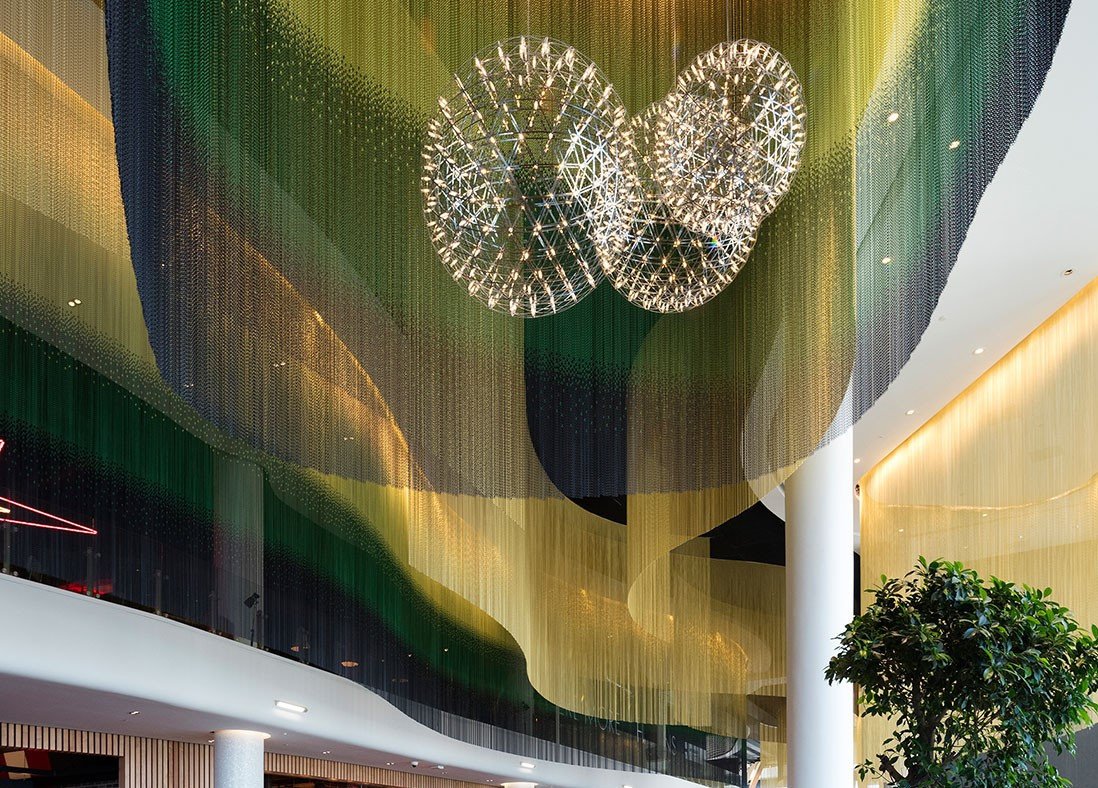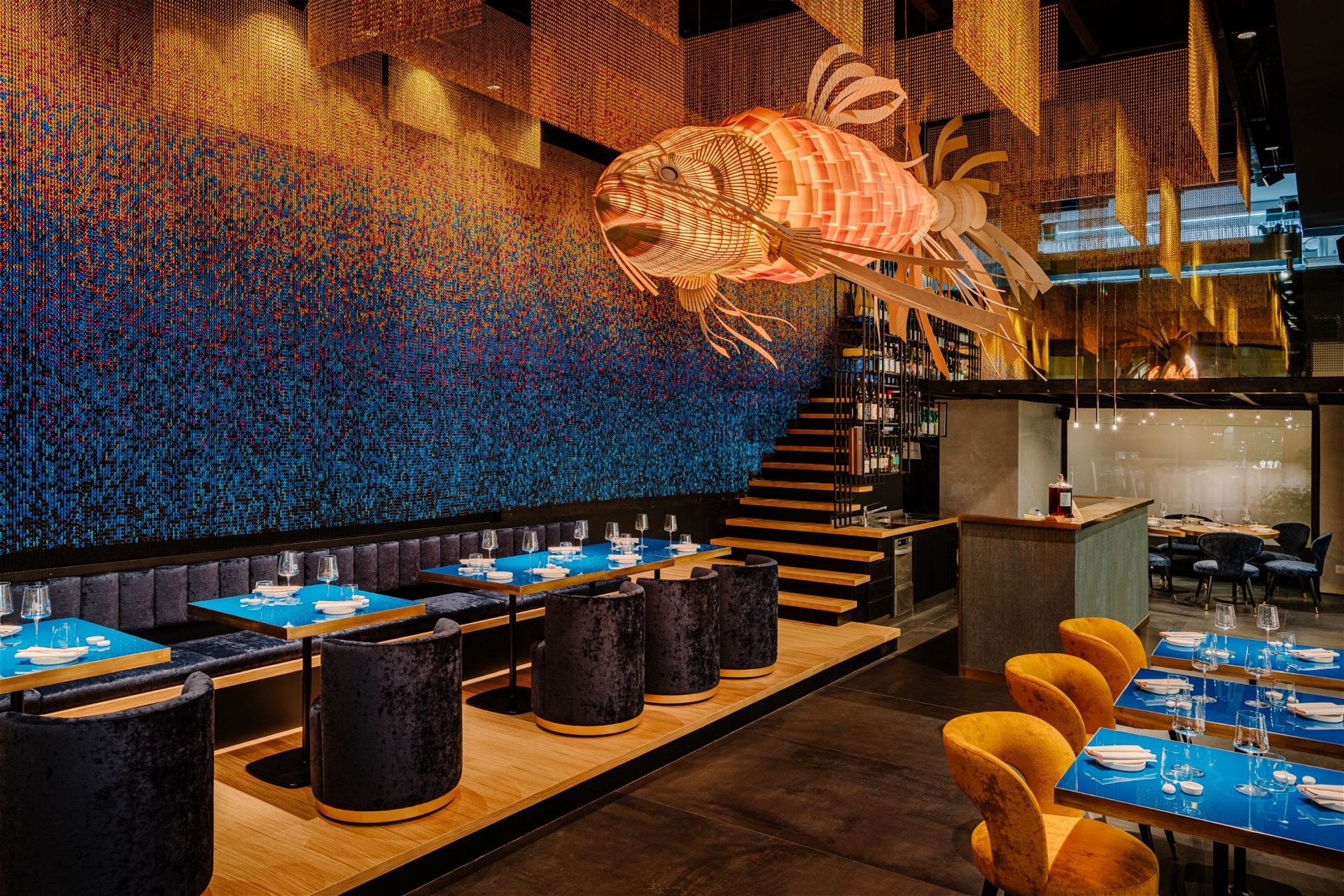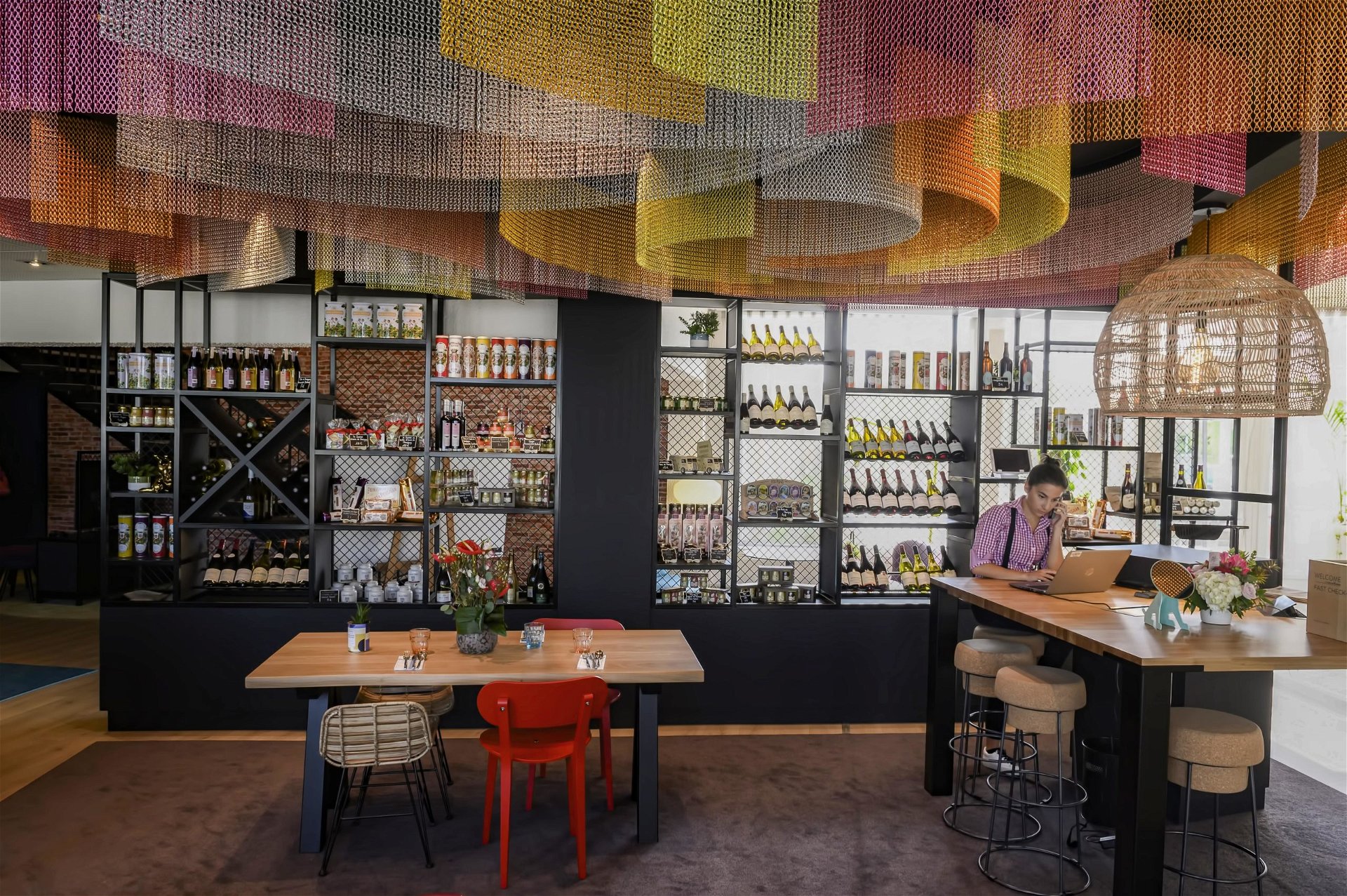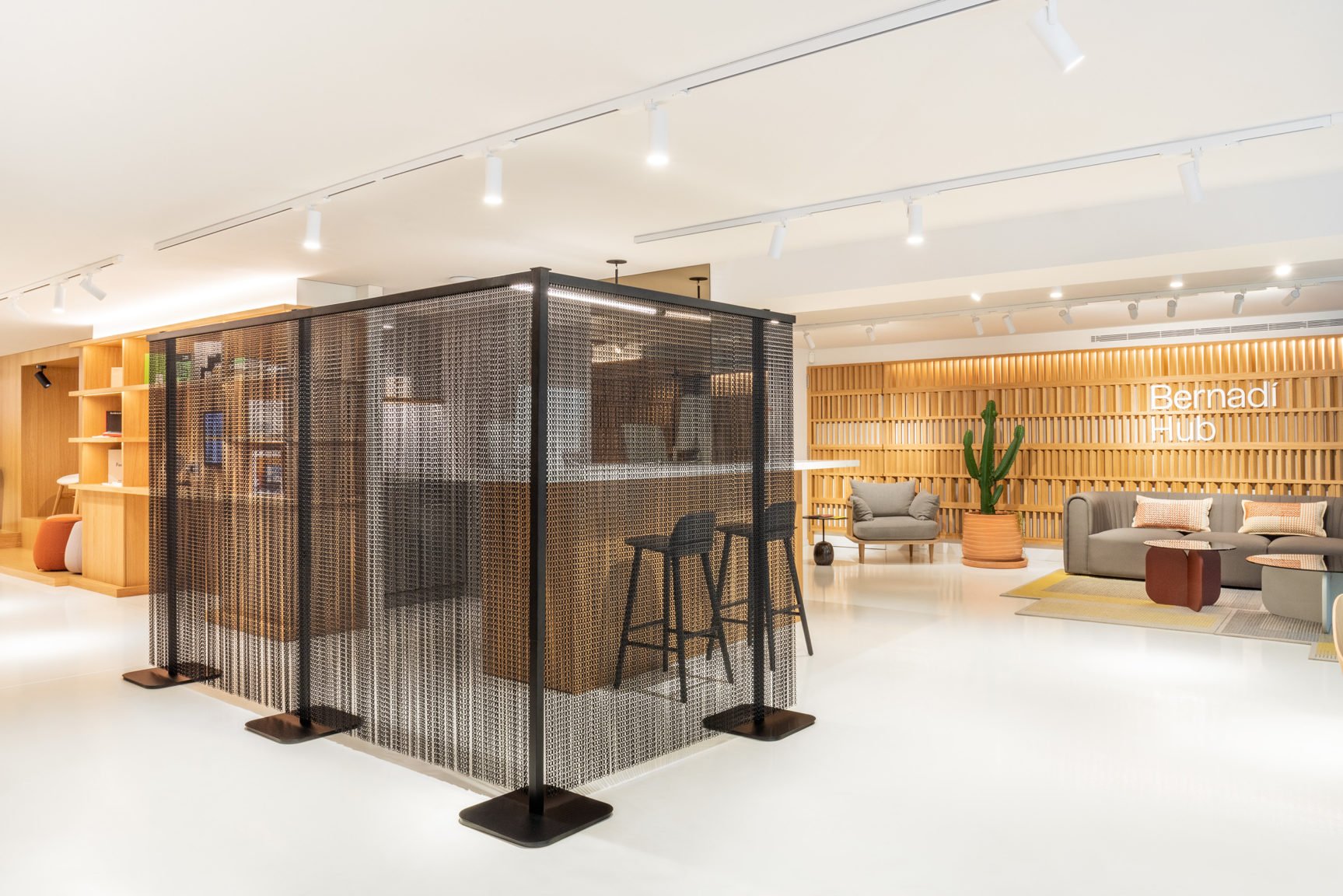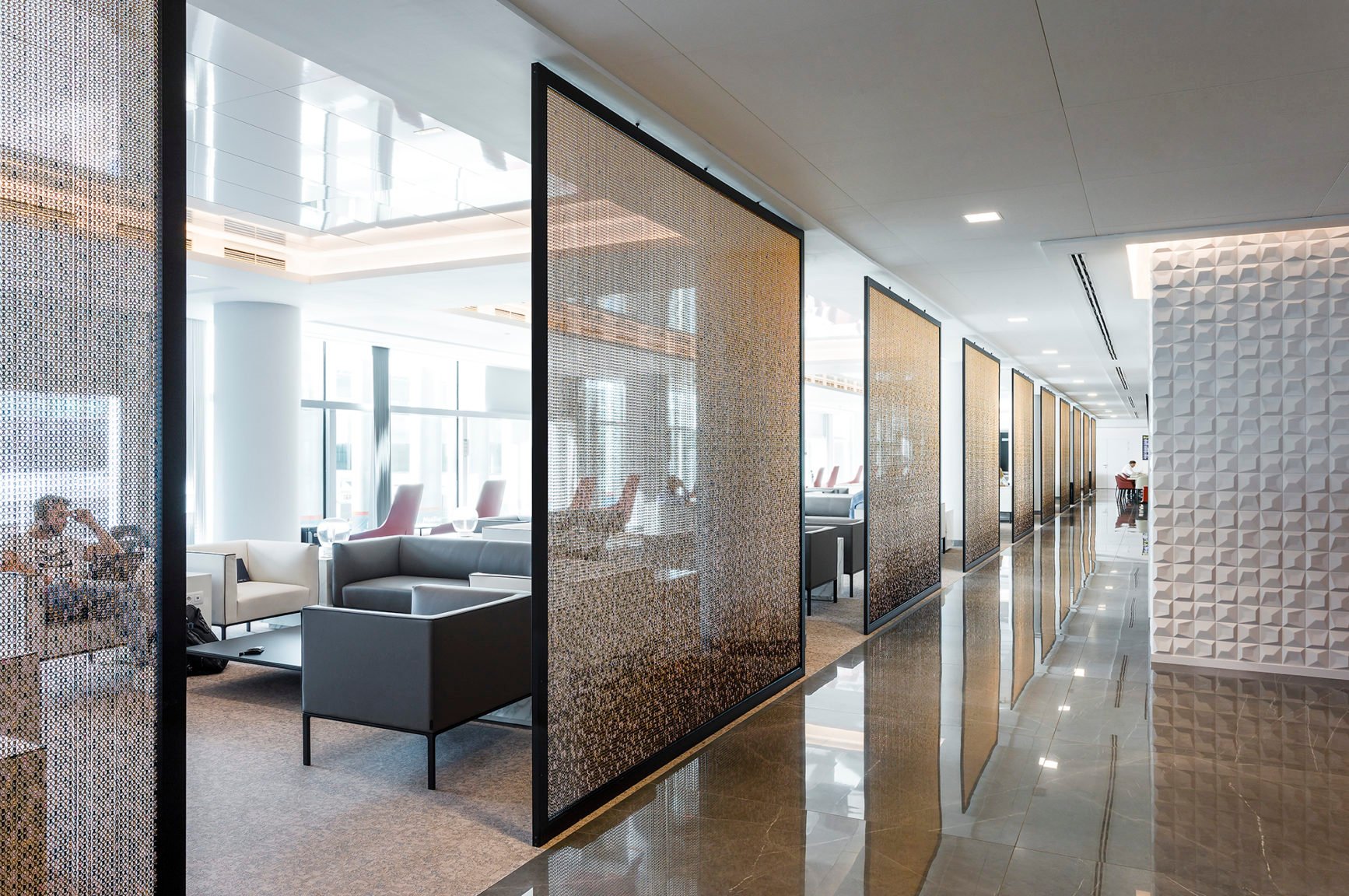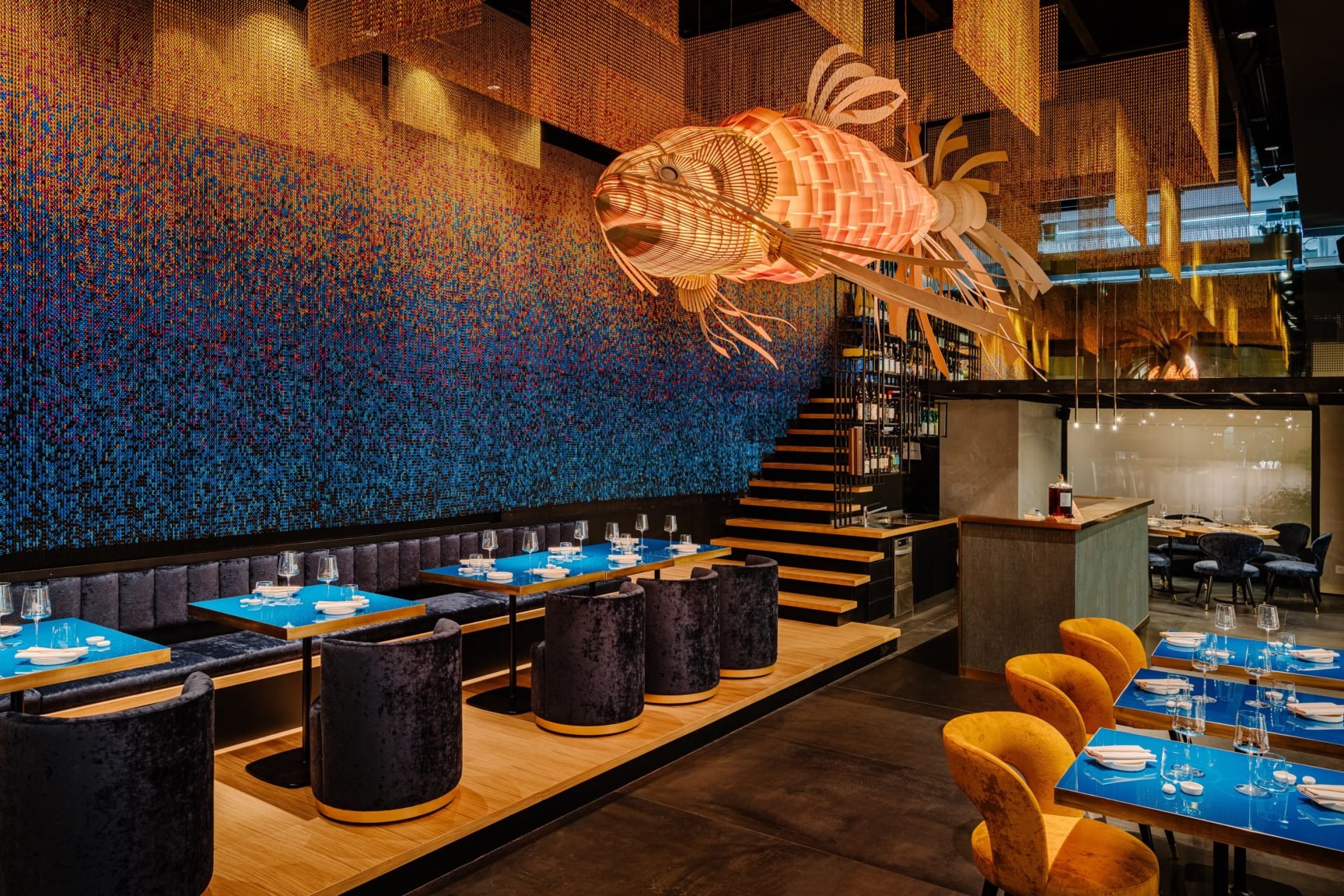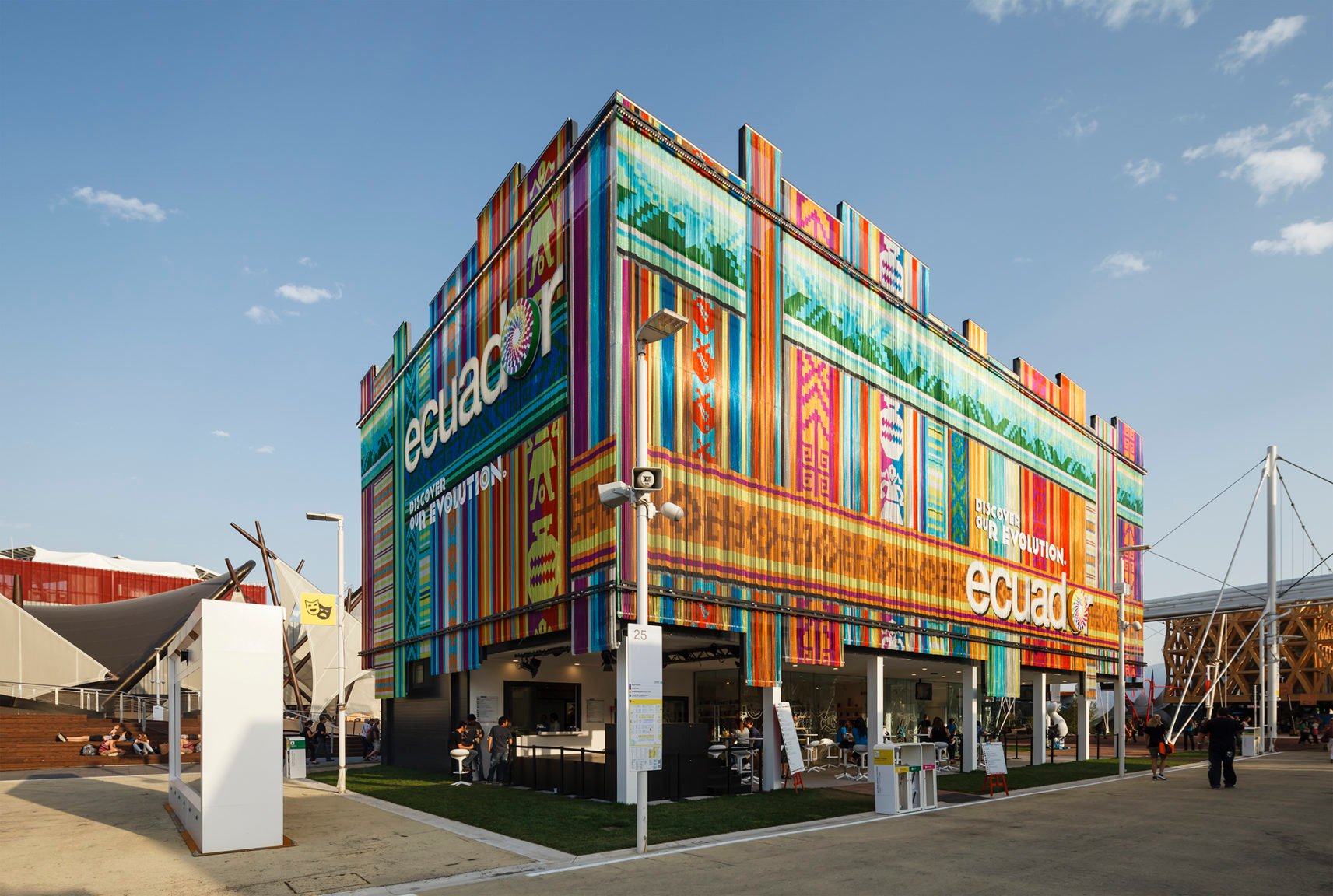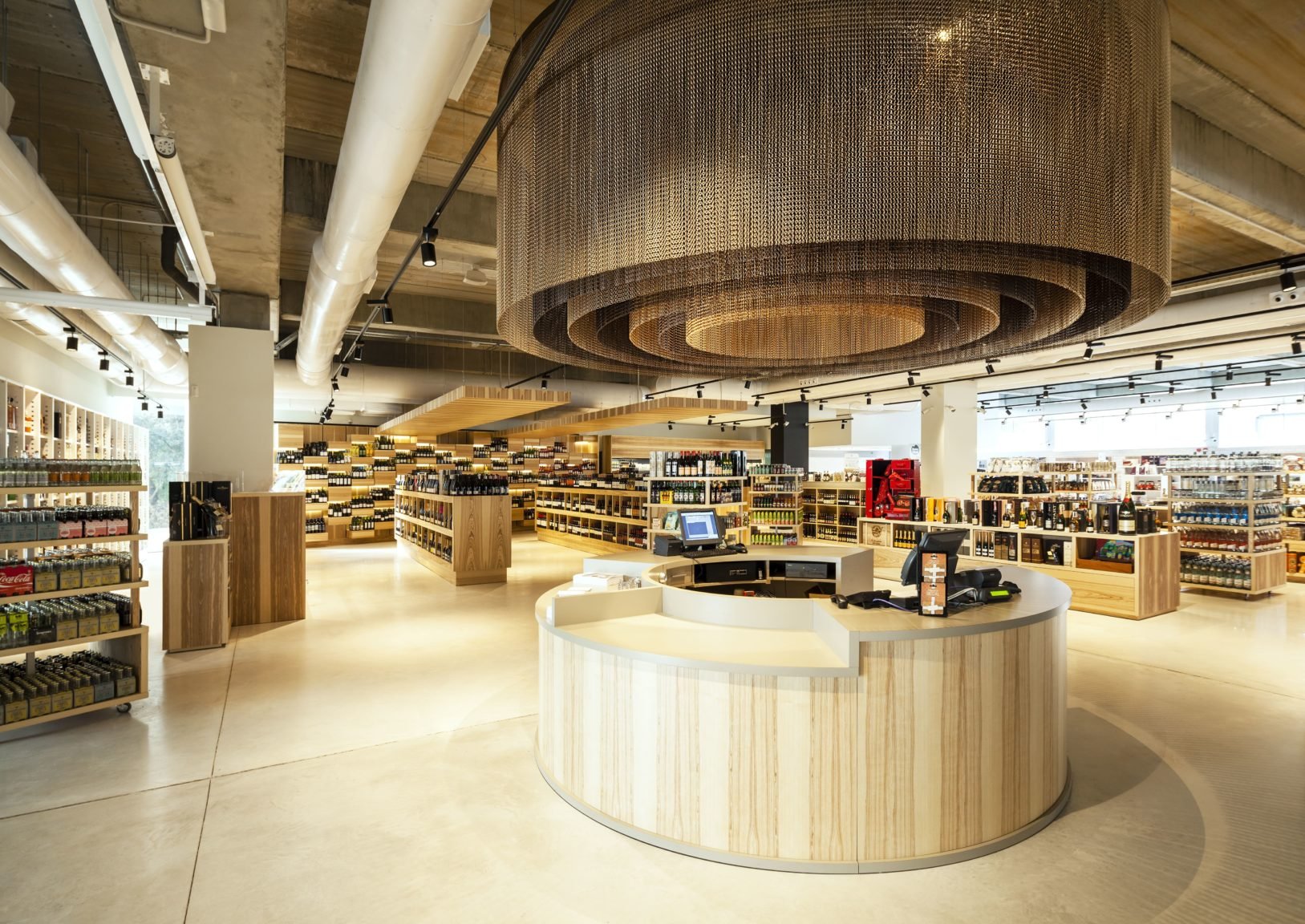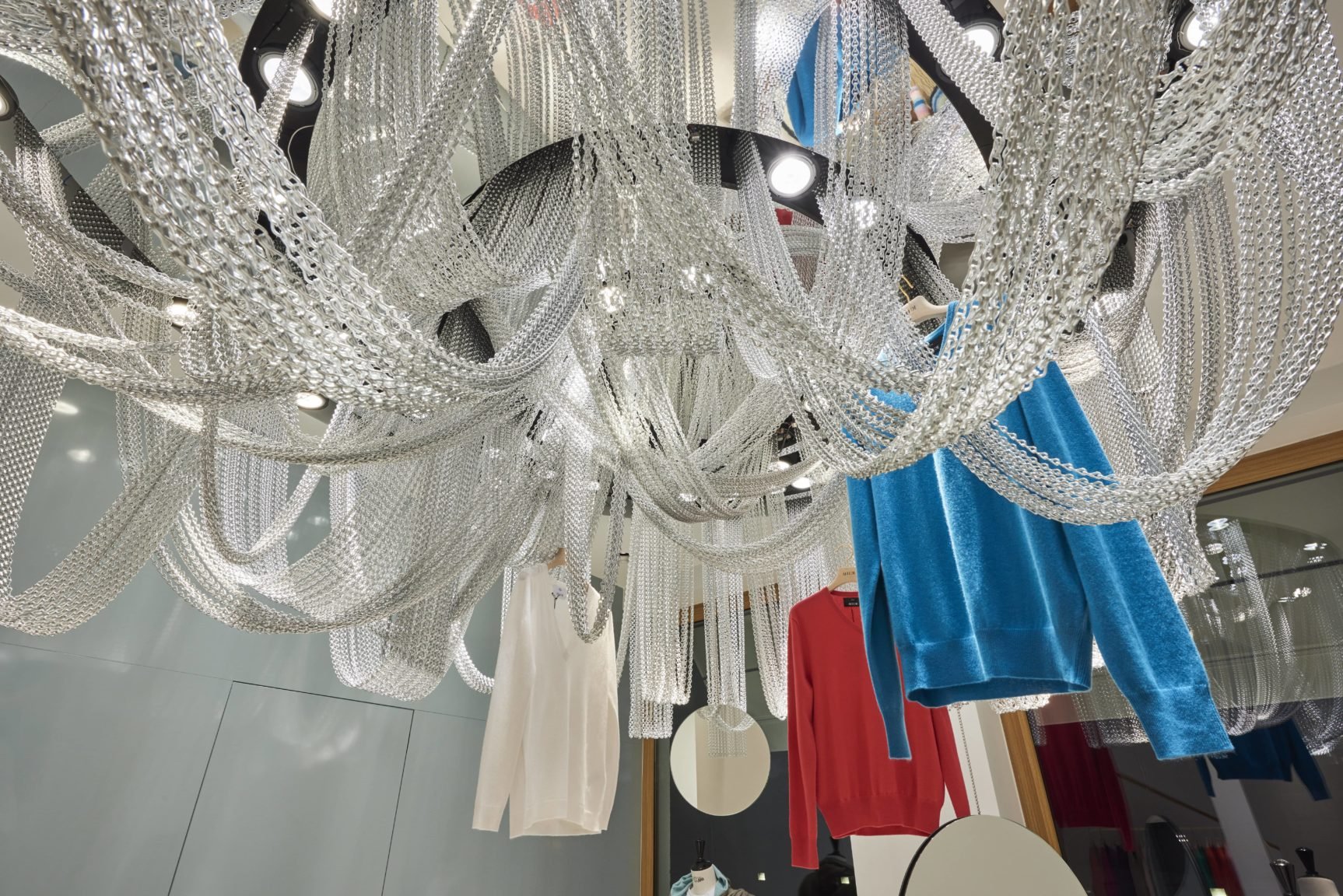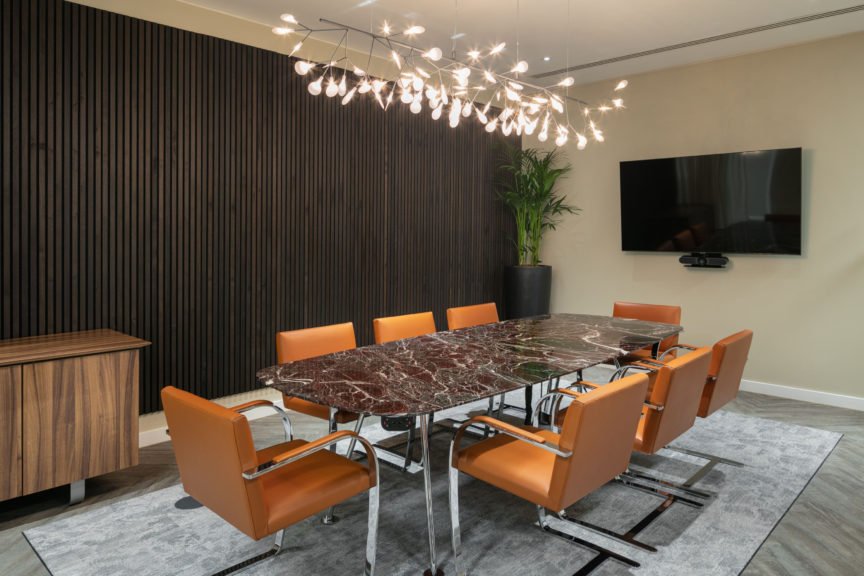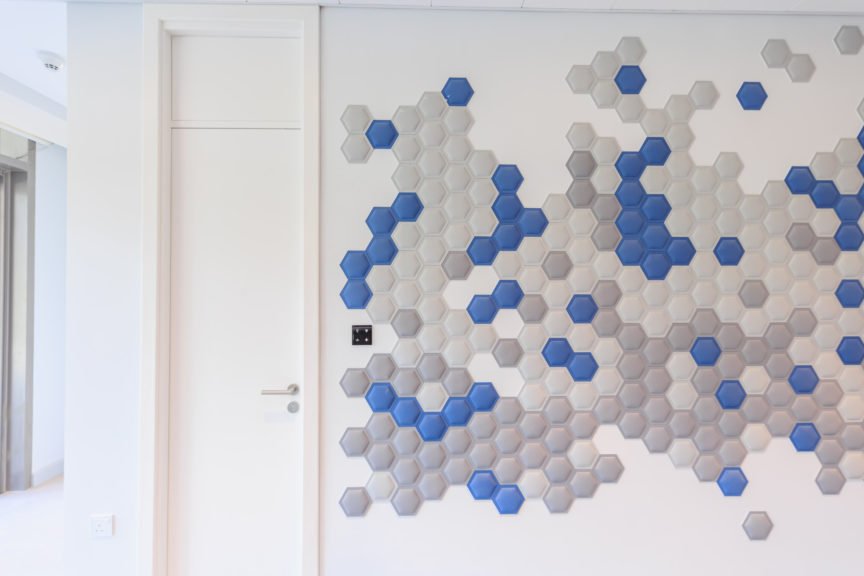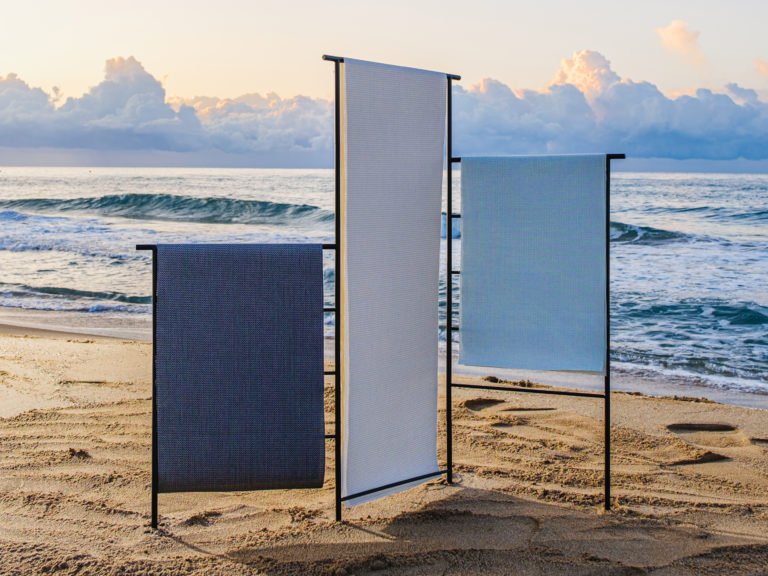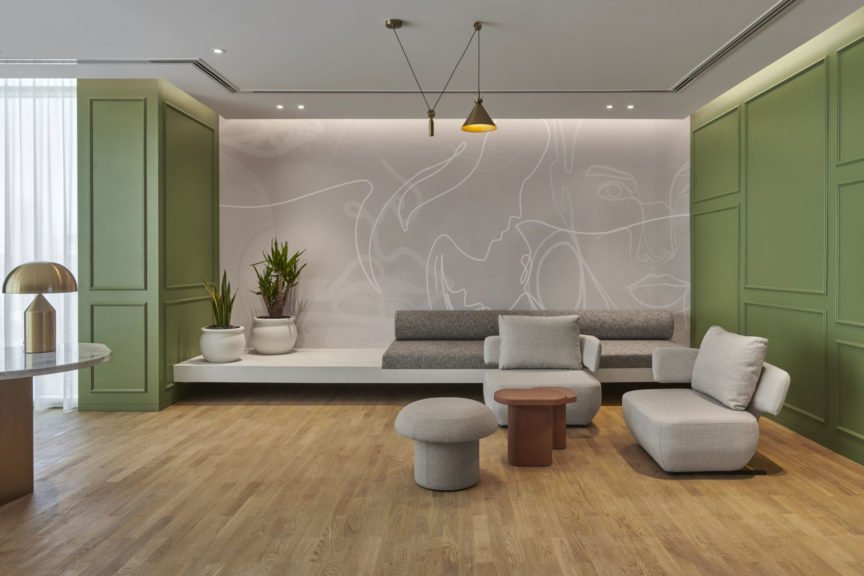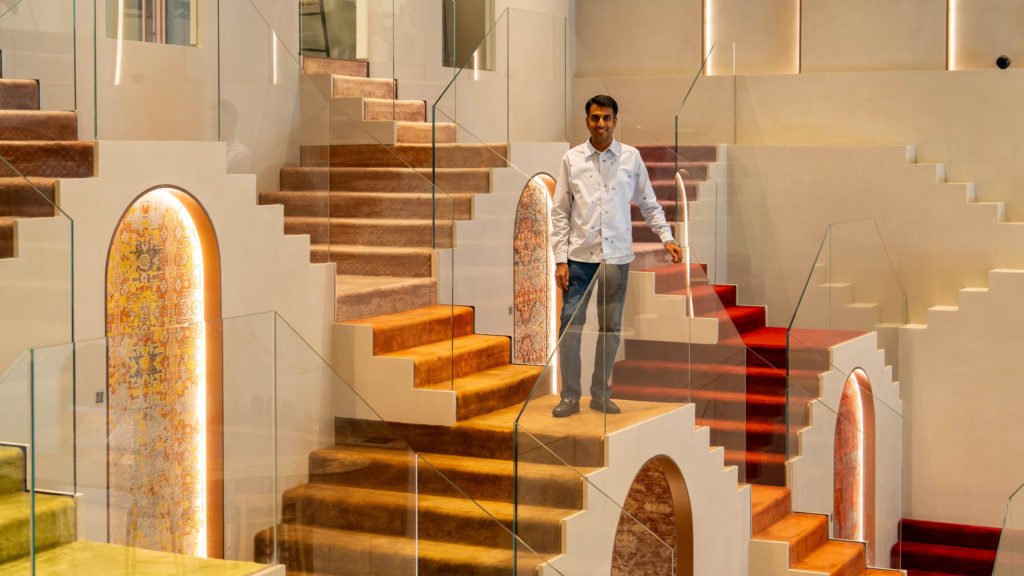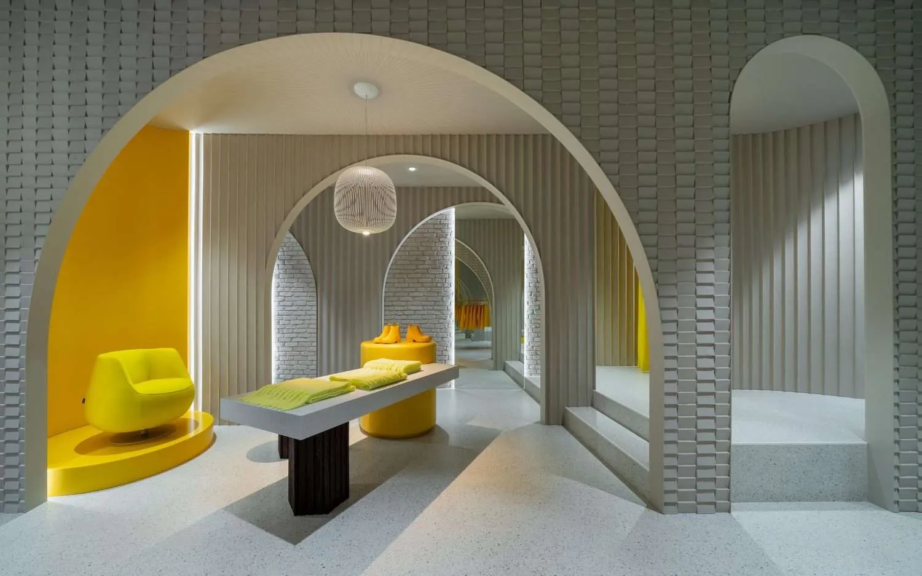The phrase, ‘first impression is the last impression’, seems to have been coined specifically for the hospitality industry. Known for its impeccable standards, the ever-morphing industry understands the significance of enchanting guests from the moment they step inside.
Throughout history, hospitality has been synonymous with grandeur and elegance; but today, the essence of modernism takes centre stage, embracing innovation and technology as its driving forces. However, the ultimate goal remains: to curate spaces that transcend time and leave a lasting impression. And one cannot discuss modern art in hospitality without mentioning Kriskadecor!
Clockwise, from above: Kohakinho Restaurant; Linder Cycling Hotel; KI20 Business Centre
The Spanish company’s mesmerising metal-link cascades aim at igniting imagination through breathtaking installations and playful creativity. Take, for example, their ‘aquarium effect’ at the Kohakinho Restaurant in Switzerland, where the art transports diners to an underwater wonderland or the satin sand curtain at the KI20 Business Centre in Budapest, strategically tucking away services or the reproduction of the founder’s face at the Linder Cycling Hotel in Italy, infusing identity and character into the space.
Inspiration to Installation: An Aluminium Affair
Kriskadecor has embraced the versatility of anodised aluminium and chain links as their primary material and product, respectively. To enable fully customisable solutions, the brand deviates from traditional chain loop structures to develop its own unique variations, Kriska (1970) and Snina (2008) with easy interlink connections. While Kriska is the more durable and highly versatile variant, Snina is its smaller version for high-definition and delicate designs, often used for image reproductions.
A striking example of their capabilities is the Ecuador Pavilion at Milan Expo. One look at the large installation and the personalised possibilities are abundantly clear. Tugging at the emotional history of the Latin American country, a wide range of colours are used to represent the colourful regions of the country, its population, landscape, crafts, ethnic groups, gastronomy and cultural expressions.
The secret behind this captivating colour vibrancy lies in Kriskadecor’s internal anodisation process. “The quality of our chains comes from this process, enabling us to achieve stability, hardness and an extensive colour palette with brilliant and satin finishes,” explains Natalia Vidal, Communications Manager at Kriskadecor.
The secret behind this captivating colour vibrancy lies in Kriskadecor’s internal anodisation process. “The quality of our chains comes from this process, enabling us to achieve stability, hardness and an extensive colour palette with brilliant and satin finishes,” explains Natalia Vidal, Communications Manager at Kriskadecor.
From Structure to Story: With Kriskadecor, Bespoke is the only Scope!
Driven by technology and design innovation, Kriskadecor offers optimal installation solutions that push boundaries, as far as mastering the art of replicating the effect of rain. The key lies in their approach: structure first, story later.
The brand conveniently categorises its extensive range of work into customisable collections such as the Feel Free system (room dividers), the Aura collection (lamps), and the Gradient collection (patterns) to name a few. Once the structural and functional aspects are defined, their in-house designers collaborate with technical experts to bring each space to life.
This customer-centric approach extends to the execution stage. Natalia explains, “We provide a wide range of easily accessible ceiling fixing options, and our products are shipped ready to install with clear instructions. Furthermore, our technical department guides customers in selecting the best solution to achieve their desired effect.” As a hassle-free maintenance op, Kriskadecor recommends two cleaning methods for their chains: using water and detergent (pH up to 8) or utilising steam cleaners for those who prefer to avoid chemical agents.

